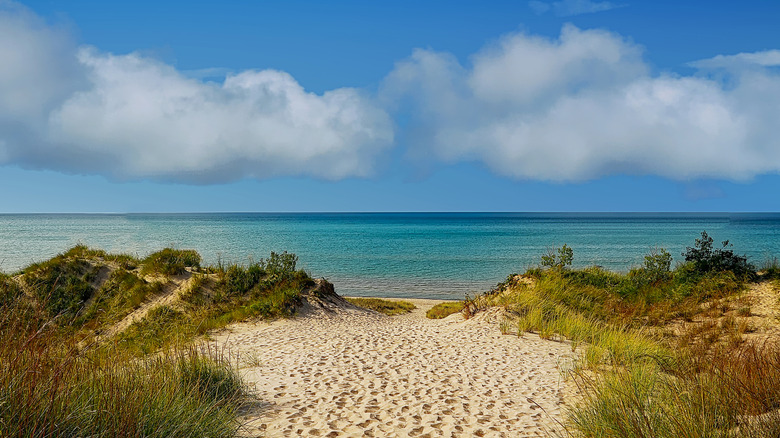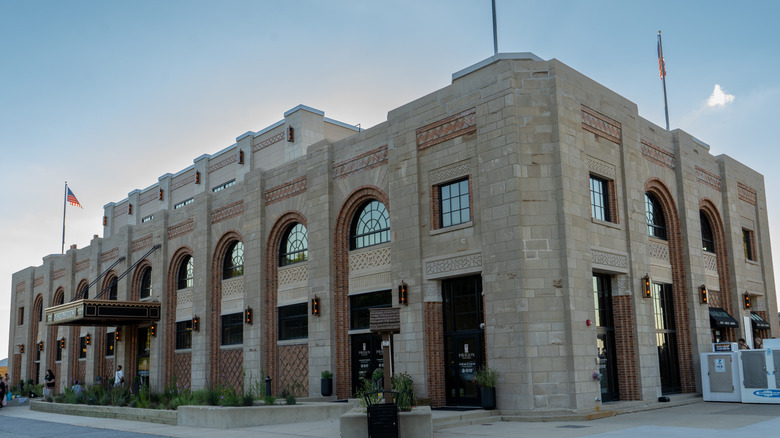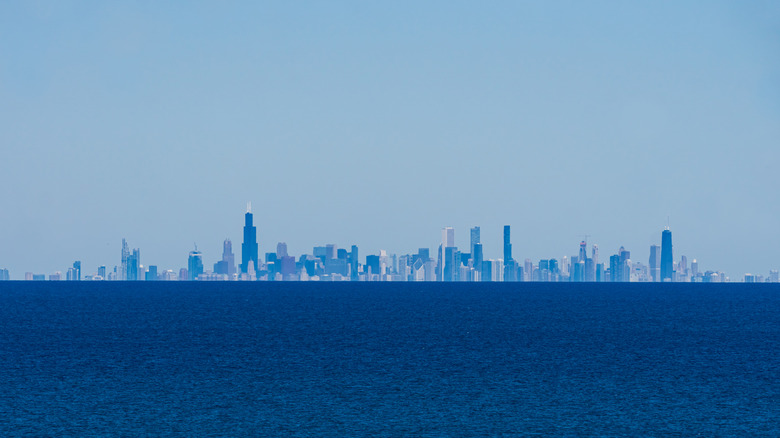Hidden On Indiana's Coast Is An Eerie, Dune-Filled Ghost Town With Abandoned Buildings And Beaches
Indiana, the Hoosier state, offers diverse attractions, from world-class museums in bustling cities to its utopian small towns full of creatives, and lakefront resorts surrounded by dunes. Among its most fascinating features is a high concentration of ghost towns. In a story similar to that of Indiana's Rose Island, an abandoned amusement park which is now part of Charlestown State Park, one standout is City West, an eerie, dune-covered ghost town now part of Indiana Dunes State Park. This site, also reclaimed by nature over time, offers visitors a unique blend of history and outdoor adventure.
Located within the state park's Waverly Beach on the stunning Lake Michigan coastline, the remnants of City West tell the story of a once-ambitious settlement. At its peak, the town housed around 200 residents, complete with a sawmill, homes, and even a 22-room hotel. However, financial troubles in 1837 brought construction and further development to a halt, leaving the settlement to be swallowed by shifting sands and the elements. Today, minor traces of the town's infrastructure remain, offering a fascinating glimpse into the past. Nature enthusiasts and history buffs alike can explore the dunes and imagine what could have been had fate favored this lost city.
The history of Indiana's ghost town, City West
City West was established in 1836 along the southern shoreline of Lake Michigan, near the site of an old trading post called Petit Fort. Positioned directly opposite Chicago, its founders envisioned it as a rival metropolis ideally located for trade. The town initially thrived, with 25 blocks, around 40 homes, a saw mill, a pier, and a 22-room hotel. While the idea of City West attracted attention at first, practical infrastructure such as schools and churches was neglected, leaving the town's foundation unstable.
Investor panic during the crisis of 1837 brought widespread economic collapse, halting City West's development. Most residents abandoned the settlement by 1839, and its structures were left to the mercy of the elements, with no attempts made to rebuild or revive the area. A forest fire in 1853 destroyed many remaining buildings, and by the 1870s, the lake had reclaimed the pier, too. Any usable building materials were repurposed for construction elsewhere. Unlike its rival Chicago, which rose to prominence, City West vanished into history, now hidden under Indiana Dunes State Park. The only surviving structure in the area is a 1930s bathhouse near the park's entrance, now serving as a nod to the site's storied past.
Visiting Indiana Dunes State Park
Today, the site of what could have been a bustling metropolis is a serene, protected natural area. Indiana Dunes State Park spans over 2,000 acres of breathtaking white sand beaches, wetlands, woodlands, and dunes. Visitors can hike, swim, and explore the area's ecological diversity. The park's shoreline boasts three miles of dunes, offering unique hiking and biking trails, including the popular 3 Dunes Challenge. This 1.5-mile trek takes hikers across Mount Tom, Mount Jackson, and Mount Holden, providing stunning views of the lake and surrounding natural landscapes. There are over 70 miles of other hiking route options of varying levels of difficulty to tackle as well.
The park's designated swimming beach has lifeguards on duty during peak season, making it a safe spot for families. For birdwatchers, Indiana Dunes is a year-round haven with over 350 bird species. The state park offers an 8-week beginner birding class and holds events for International Migratory Bird Day. During the summer, you can expect to see a variety of warblers, tanagers, and bald eagles. In the winter, species such as finch, numerous waterfowl, and snowy owls may be spotted. Near the parking area, the beach pavilion offers dining options and picnic supplies. Its rooftop provides panoramic views of Lake Michigan and Chicago's skyline in the distance.


